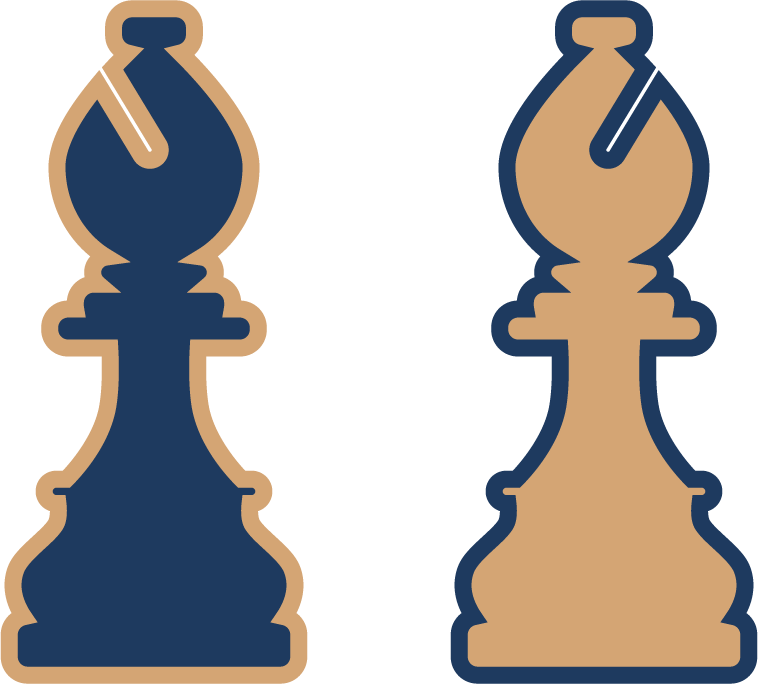Do you ever wonder why you keep delaying tasks, even when you know they’re important? Procrastination is a universal challenge that affects people across all walks of life. It can hinder your goals, waste valuable time, and even impact your overall well-being.
With over 20 years of research and expertise, I’ve discovered that overcoming procrastination isn’t just about willpower. It’s about understanding the root causes and applying science-backed methods. For instance, practicing self-compassion and self-forgiveness can significantly reduce stress levels linked to procrastination habits.
In this article, you’ll explore actionable strategies like the Two-Minute Rule and environmental design. These techniques are designed to help you take control of your life and achieve your goals more effectively.
Key Takeaways
- Procrastination is a common issue that affects productivity and well-being.
- Science-backed methods like self-compassion can help reduce stress.
- The Two-Minute Rule is a simple yet effective strategy to start tasks.
- Environmental design can minimize distractions and boost focus.
- Understanding the root causes of procrastination is key to overcoming it.
Understanding Procrastination: Why We Delay
Procrastination is more than just laziness—it’s a complex emotional response. Many people assume it’s about poor time management, but research shows it’s often tied to emotional regulation. When faced with a challenging task, negative feelings like anxiety or self-doubt can lead to avoidance.
One of the biggest contributors to procrastination is self-criticism. Harsh thoughts about your abilities can amplify stress and make it harder to start. Instead of addressing the problem, you might delay the task to avoid those uncomfortable emotions.
The Psychology Behind Procrastination
Procrastination often stems from emotional avoidance rather than laziness. When a task feels overwhelming, your brain seeks short-term relief by focusing on something easier. This creates a cycle where the task becomes even more daunting over time.
Common Triggers of Procrastination
Several factors can trigger procrastination. Perfectionism, for example, can make you fear failure, leading to delays. Fear of judgment or task aversion can also play a role. Real-world examples include delaying exercise or putting off tax filing.
Understanding these triggers is the first step to breaking the cycle. By addressing the emotional roots of procrastination, you can develop healthier habits and improve productivity.
How to Stop Procrastinating with Self-Compassion
Breaking free from procrastination starts with understanding yourself. Often, we delay tasks because of negative feelings like anxiety or self-doubt. Instead of harsh self-criticism, practicing self-compassion can help you overcome these challenges.

Research shows that self-compassionate individuals procrastinate less. Kristin Neff’s framework highlights three key elements: self-kindness, common humanity, and mindfulness. These principles can transform how you approach tasks and setbacks.
The Role of Self-Kindness in Reducing Avoidance
Self-criticism often amplifies stress, making it harder to start tasks. In contrast, self-kindness encourages a supportive inner dialogue. For example, instead of thinking, “I’m not good enough,” try saying, “I accept my imperfections and will keep trying.”
This shift in mindset reduces avoidance and boosts motivation. It also helps you stay focused on the task rather than the fear of failure.
Practical Steps to Cultivate Self-Compassion
Start by practicing mindfulness. Acknowledge your feelings without judgment. Recognize that everyone struggles—this is the essence of common humanity. Finally, treat yourself with kindness, especially during setbacks.
Here’s a simple step: Write down three things you appreciate about yourself. This ritual can help you build a habit of self-compassion and improve task persistence.
By adopting these practices, you’ll find it easier to tackle challenges and reduce stress. Self-compassion isn’t just about being kind—it’s about empowering yourself to take action.
The Power of Self-Forgiveness in Breaking the Cycle
Self-forgiveness can be a game-changer in overcoming procrastination. Many people struggle with guilt and shame after delaying tasks, which only fuels the cycle. Research from Carleton University shows that self-forgiveness improves mood and reduces exam procrastination among students. This highlights its role in breaking the emotional barriers tied to avoidance.
Why Forgiving Yourself Matters
Self-forgiveness helps break the shame-procrastination loop. When you forgive yourself, you release the negative feelings that often lead to avoidance. For example, a student who forgives themselves for delaying study sessions is more likely to start preparing without the weight of guilt.
The Carleton University study found that self-forgiveness improves mood regulation. This shift in emotional state makes it easier to tackle tasks, even under pressure. By addressing the emotional roots of procrastination, self-forgiveness offers a practical solution to a common problem.
Steps to Practice Self-Forgiveness
Practicing self-forgiveness involves three key steps: acceptance, emotional processing, and restitution. First, acknowledge that you’ve procrastinated. This step removes denial and sets the stage for change.
Next, process your feelings without judgment. Reflect on why you delayed the task and how it made you feel. Finally, commit to corrective actions. For instance, if you’ve delayed filing taxes, create a plan to complete it promptly.
Self-forgiveness isn’t about letting yourself off the hook. It’s about empowering yourself to take action. By adopting these ways, you can break free from procrastination and achieve your goals with greater ease.
Effective Planning: A Key to Avoiding Procrastination
A well-structured plan is one of the most powerful tools to combat procrastination. When you organize your time and tasks in advance, you reduce the mental load of decision-making. This approach helps you stay focused and productive throughout the day.

How to Plan Your Day for Maximum Productivity
Dean Bokhari’s “One BIG Thing” and “No Matter Whats” system is a game-changer. This method involves identifying one major task and a few non-negotiable items for the day. By prioritizing these, you ensure that your work aligns with your goals.
For instance, scheduling workouts or blocking focus time can eliminate decision fatigue. When you pre-plan, you save mental energy for the tasks that matter most.
The Importance of Prioritizing Tasks
Prioritization is essential for reducing overwhelm. The “Nothing Alternative” strategy is a simple yet effective tip. It involves committing to a task and avoiding distractions until it’s complete. This approach minimizes delays and keeps you on track.
By planning ahead, you create a clear roadmap for your day. This clarity reduces stress and helps you tackle tasks with confidence. Effective planning isn’t just about managing time—it’s about taking control of your productivity.
The Two-Minute Rule: A Simple Strategy to Get Started
Starting small can lead to big changes in your daily habits. The Two-Minute Rule, popularized by James Clear in his book Atomic Habits, is a powerful tool to build momentum. The idea is simple: if a task takes less than two minutes, do it immediately. This approach helps you overcome the initial resistance to starting.
How the Two-Minute Rule Works
The Two-Minute Rule acts as a gateway habit. By committing to just two minutes, you make it easier to take action. For instance, instead of aiming to read an entire book, start by reading one page. This small step reduces the mental barrier and builds consistency over time.
James Clear emphasizes identity-based habits. By focusing on “becoming the type of person who shows up,” you shift your mindset. This approach transforms the Two-Minute Rule from a simple trick into a long-term strategy for success.
Examples of Applying the Two-Minute Rule
Clear provides practical examples to illustrate the rule. Lacing up your running shoes can lead to a full workout. Writing one sentence can spark a creative flow. These small actions create a ripple effect, making it easier to tackle larger tasks.
Another example is the story of a person who lost 100 pounds by committing to short gym visits. Starting with just five minutes each day, they gradually increased their routine. This incremental approach highlights the power of the Two-Minute Rule in building lasting habits.
In contrast, Chandler’s “Write or Do Nothing” ultimatum for writers focuses on eliminating distractions. While the Two-Minute Rule encourages starting, Chandler’s method emphasizes staying focused once you begin. Both strategies complement each other, offering a balanced approach to productivity.
Creating a Procrastination-Free Environment
Your surroundings play a huge role in shaping your productivity and focus. A well-designed environment can minimize interruptions and help you stay on track. By removing distractions and optimizing your workspace, you can create a space that encourages action instead of delay.
Removing Distractions for Better Focus
Dean Bokhari’s iPhone-in-drawer tactic is a simple yet effective way to reduce distractions. By keeping your phone out of sight, you eliminate the temptation to check notifications. Managing digital interruptions is equally important. Tools like app blockers or noise-canceling headphones can help you maintain focus.
Environmental cues also play a role in forming habits. For example, laying out gym clothes the night before makes it easier to exercise in the morning. Small changes like these can reduce decision fatigue and keep you motivated.
Designing a Workspace That Encourages Productivity
Your workspace should be a place that inspires action. Start by decluttering your desk and organizing essential things. A clean and orderly space reduces mental distractions and helps you concentrate better.
The Zeigarnik Effect explains why unfinished tasks linger in our minds. Taking strategic breaks can actually boost creativity and problem-solving. For instance, stepping away from a challenging task and returning later often leads to fresh insights.
Here’s a quick checklist to audit your home or office for distractions:
– Remove unnecessary items from your desk.
– Use app blockers to limit digital interruptions.
– Invest in noise-canceling headphones for a quieter environment.
– Organize your space to support your daily habits.
By creating a procrastination-free environment, you set yourself up for success. Small adjustments can make a big difference in your ability to stay focused and productive.
Conclusion: Taking Action to Overcome Procrastination
Taking small steps today can transform your productivity tomorrow. By applying strategies like self-compassion, effective planning, the Two-Minute Rule, and environment design, you can break the cycle of delay. Start with one method, such as habit stacking, to build momentum.
Self-forgiveness plays a crucial role in long-term behavior change. Letting go of guilt empowers you to take action and stay focused on your goals. Remember, progress is about consistency, not perfection.
For a deeper dive into the science behind these techniques, explore the author’s book. Now is the time to implement these tactics and reclaim your motivation. Take the first step today and see the difference it makes.
FAQ
What is procrastination, and why do people do it?
Procrastination is delaying tasks despite knowing they need to be done. People often do it due to fear of failure, perfectionism, or feeling overwhelmed by the task.
How can self-compassion help in overcoming procrastination?
Self-compassion reduces the pressure and guilt associated with procrastination. By being kind to yourself, you can approach tasks with a positive mindset and reduce avoidance behaviors.
What is the two-minute rule, and how does it work?
The two-minute rule suggests starting a task if it takes less than two minutes to complete. This strategy helps build momentum and makes it easier to tackle larger tasks.
How can I create a procrastination-free environment?
Remove distractions like phones or clutter, and design a workspace that promotes focus. A clean, organized environment can help you stay on track and reduce the urge to delay tasks.
Why is prioritizing tasks important in avoiding procrastination?
Prioritizing tasks helps you focus on what’s most important, reducing feelings of overwhelm. Breaking tasks into smaller steps makes them more manageable and less intimidating.
How does self-forgiveness help break the cycle of procrastination?
Self-forgiveness allows you to let go of past mistakes and move forward without guilt. It helps you approach tasks with a fresh perspective and reduces the fear of failure.
What are some common triggers of procrastination?
Common triggers include fear of failure, lack of motivation, perfectionism, and feeling overwhelmed. Identifying these triggers can help you develop strategies to address them.
How can planning my day improve productivity?
Planning your day helps you allocate time for tasks, set clear goals, and stay organized. It reduces decision fatigue and ensures you focus on what truly matters.
